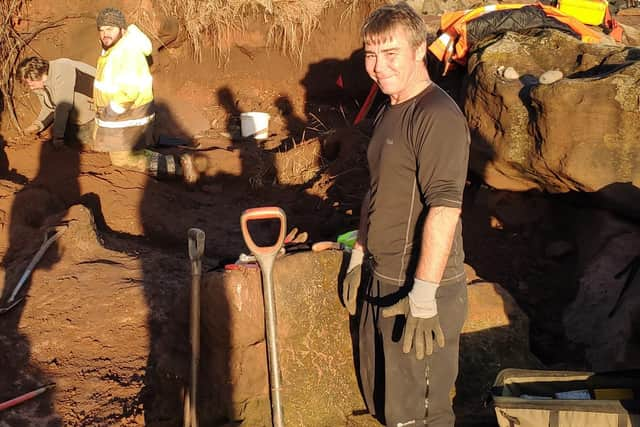1,000 year old human remains found at ancient Scottish seaside caves
They were discovered in early December by Buckhaven resident Stuart Cook, who works as the site warden for the Save Wemyss Ancient Caves Society (SWACS) which was set up to protect and preserve the precious heritage of the caves which are home to a large and unique collection of Pictish symbol carvings.
Excavation work has now been completed, and the remains will undergo forensic analysis next year.
Advertisement
Hide AdAdvertisement
Hide AdStuart said: “I was checking the coast edge for any damage caused by the recent storms and came across what seemed to be a couple of bone fragments. On closer inspection, I could also make out what was obviously a human skull poking out of the sand.”


The original skull was largely intact, but what appeared initially to just be a fragment of leg bone sticking out of the soil turned out to be a complete separate burial lying directly on top of the bedrock - it had probably been covered by a layer of stones, some of which remained in position. Unusually, the body was in a crouched position.
Joanna Hambly, archaeologist with the SCAPE Trust, said: “At least five skeletons have previously been found along the coast, the most recent in 1988 and 1993. These were radiocarbon-dated to around the 11th century so it’s probable that the new finds are at least 1,000 years old and from a now-eroded early medieval cemetery. No grave goods - pottery or metalworking - have been found with any of the burials.
“It remains unclear why there have been a cemetery here, but early Christian crosses found in several Fife caves, including our own Jonathan’s Cave and the collapsed West Doo Cave, indicate that they were important places for early Christianity and may have been places of pilgrimage.”
Mike Arrowsmith, society chairman, said the group was looking forward to getting the results of the analysis next year.
“Coastal erosion presents a real long-term threat to this unique site, but events like this can also help us learn more about its history,” he said. “Modern scientific techniques can now give us a wealth of information on where these people might have come from and the lives they may have led.”